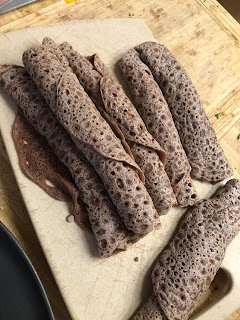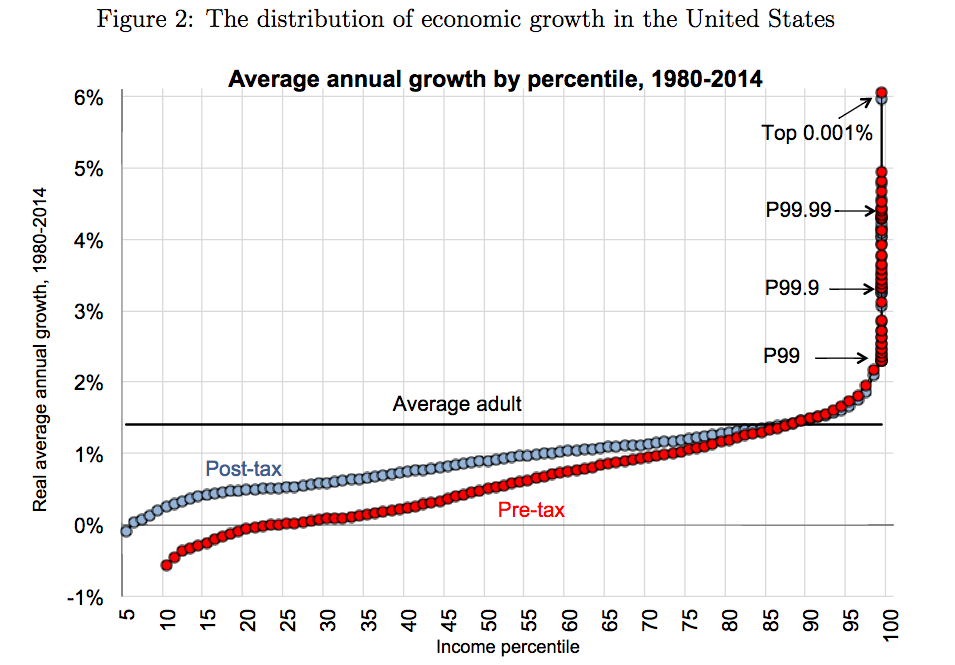Warren Buffett openly and famously admits to paying a lower rate than his secretary. When Mitt Romney released his taxes (the last Republican presidential nominee to do so!), he released a single year that showed him paying a whopping 12%. And that was without taking all the deductions he was entitled to in that year. Yes, Mitt Romney lied on his taxes in order to pay more (and then presumably, re-filed after the election).
Unfortunately, every single damn time we start to talk about the fairness of the current tax system that has allowed economic inequality to flourish like this...
...someone then points out the enormous amount of dollars that the wealthy are paying in taxes with a graph like this:
Wow, the 1% are paying so much in taxes! Give them tax breaks stat!
Yes, it is true that the top 1% pay a lot of taxes. But what does this indicate? Does it mean they are taxed excessively, or does it mean they are making a larger and larger share of income? See the first graph for the answer.
I was asked recently a series of questions which I will paraphrase this way:
“why do you care that many extremely wealthy people pay a lower true tax rate than you do, and why do you think we should raise their taxes given that they that they already pay a lot in actual dollars?”
I was tempted to mention "fairness" in my answer, but I realized how subjective this is ("is it fair that people pay for public schools they don't use?" etc) and so decided to step over this rat hole.
Here’s what I care about: my welfare, my family’s welfare, my community’s welfare, my state’s welfare, my country’s welfare, my planet’s welfare. Beyond the Earth’s atmosphere, my empathy drops sharply.
I view economic inequality to be a major threat to all of the above.
This isn’t simply a case of sour grapes. Here’s how concentrated wealth in the hands of others has hurt me and my family. When we were looking to buy a house, we decided on a small mostly rural community. It was a 90 minute bus ride each way to work, but the public schools were excellent and it was relatively affordable.
Our real estate agent told us that the first bid we put on a house (over asking price) was beat by THIRTEEN all-cash offers.
I found out later that money was pouring into our community from East Coast hedge funds who were buying up houses, doing cosmetic work, and flipping them for more money.
The result is that we are impoverished, as well other people in my community.
I’m lucky. I’m just barely in the top 5%. That three bedroom ranch we paid over half a million for has already appreciated $200K. But do you see the trend here? Do you see how it’s getting harder and harder for each successive generation to make ends meet?
And if it’s this hard for me, a five-percenter, how are the 95% making it?
How come those hedge funds had so much cash? Well, if you remember what happened in 2008, banks made “bad bets” which failed and at the end of the day a lot of home owners lost but banks and financial institutions mysteriously were booming. No one went to jail either.
And there’s a lot of evidence that this was all planned (see
The Magnetar Trade: How One Hedge Fund Helped Keep the Bubble Going). And it sure looks to me like the dominos are being set up again.
When even try to discuss tax fairness as a way to solve economic inequality, we immediately run into this same brick wall: the argument that the very rich already pay a HUGE dollar amount in taxes.
Okay, it’s true. But I keep saying it’s a completely meaningless non sequitur, because it doesn’t indicate if they are taxed unfairly or if they simply control an absurd amount of wealth.
Bringing this up seems to imply that the very wealthy are taxed too much, and we should lower their taxes. But then they’ll control even more wealth. We are heading towards feudalism with this model.
Dangers of extreme wealth concentration include erosion of democracy. The Koch brothers, for example, said they wouldn’t give to GOP candidate unless they “reformed” the tax code and health bill to their liking. It’s their right, under our corrupt system of government, that is. But they wouldn’t have that much power without the concentrated wealth.
Extreme wealth concentration has a lot to do with specific policies that were designed to concentrate wealth, written by and for the people who benefit from them most. I would support policies to reverse that trend. You could call it a wealth tax - I'd support it.
Finally, I believe that the ultra-wealthy are not only taxed too little, they receive all kinds of benefits that aren’t obvious unless you’re paying close attention. For example, tax payers finance zero-interest loans to multinational corporations (which is essentially handing them money). The thing is, I don’t have a big share in any multinational corporations. So I pay for that, and I don’t get the benefit that a large stakeholder would.
The 2008 crash was so profitable and risk-free that of course it will happen again in a modified form. Bitcoin will likely be involved. No, you probably won't figure out how to profit from it unless you're in the club. And you wouldn't have read this far if you were.
To the rest of you: thanks for reading.










